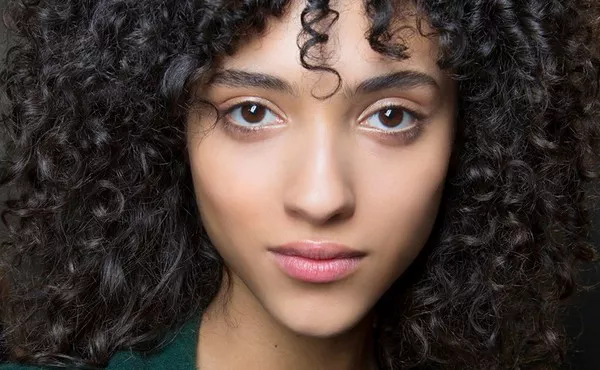Every day, individuals experience changes in their hair texture and patterns, which can be both exciting and perplexing. One common occurrence that many people notice is their straight hair gradually transforming into wavy locks. This puzzling phenomenon has captivated the curiosity of countless individuals seeking answers. In this essay, we will explore the various factors that contribute to this transformation, shedding light on the science behind the process and dispelling misconceptions along the way.
I. Understanding Hair Structure:
The Foundation of Transformation Straight or wavy, our hair owes its distinctive qualities to its structure. Each strand is composed of three layers: the cuticle, cortex, and medulla. The shape of the hair follicle, located beneath the scalp, determines whether the hair appears straight, wavy, or curly. For those with naturally straight hair, the follicles are round, allowing the hair to grow out without significant bends or kinks.
II. The Influence of Genetics: Unveiling Inherited Traits
The Genetic Underpinnings: Unlocking the Inheritance Code
Genetics plays a vital role in determining our hair type, including its texture and waviness. It’s important to remember that our genetic makeup is a complex amalgamation of traits inherited from our parents and ancestors. While it is not uncommon for individuals with straight hair to observe a shift towards waviness over time, the underlying genetic factors that trigger this change are not yet fully understood. Research suggests that a combination of multiple genes contributes to hair type variations, making the process intricate and unique to each individual.
III. Hormonal Influences: The Power of Changing Hormone Levels
Hormones and Hair: A Dynamic Relationship
Hormones are chemical messengers in our bodies that regulate various bodily functions. Fluctuations in hormone levels can affect numerous aspects of our health, including hair growth and texture. During puberty, for instance, the surge of hormones can impact hair follicles and alter the hair’s structure. This transformation is often temporary and may stabilize as hormonal levels balance out. However, in some cases, individuals may experience a more permanent shift towards wavy hair due to these hormonal changes.
IV. Aging Gracefully: The Evolution of Hair Texture
Timeless Transformation: Hair and Aging
As we age, our bodies undergo numerous transformations, and our hair is no exception. It is not uncommon for individuals with naturally straight hair to observe a gradual change in texture as they get older. This is primarily due to a decrease in the production of sebum, a natural oil that keeps the hair moisturized. The reduced sebum production can result in drier hair, causing it to lose its straightness and gain more wave or curl.
V. Environmental Factors: External Forces at Play
Environmental Assault: The Impact of External Influences
Our hair is exposed to various external factors that can significantly impact its texture and appearance. Excessive exposure to heat, humidity, and UV radiation can lead to structural changes in the hair, including the alteration of its straight pattern. Frequent use of heat styling tools, such as flat irons, can weaken the hair’s protein structure and disrupt its natural straightness. Additionally, chemical treatments, like perming or coloring, can modify the hair’s shape and contribute to the development of waves.
VI. Hair Care Regimen: The Importance of Proper Maintenance
The ABCs of Hair Care: Nurturing Your Tresses
Maintaining healthy hair involves adopting a well-rounded hair care routine. Choosing the right products, such as shampoos and conditioners specifically formulated for your hair type, can help preserve its natural straightness. Regular moisturizing treatments, like deep conditioning masks, can help counteract the dryness that may contribute to the development of waves. It is also essential to avoid excessive heat styling and minimize exposure to damaging environmental factors. By implementing a gentle and nourishing hair care regimen, individuals can help preserve their hair’s natural texture and minimize the likelihood of it transitioning from straight to wavy.
VII. Embracing Change: Redefining Beauty Standards
The Beauty of Diversity: Embracing Hair Transformations
It is crucial to remember that changes in hair texture are a natural and normal part of life. While some individuals may feel perplexed or even concerned about their hair transitioning from straight to wavy, it is important to embrace and celebrate these transformations. The diversity of hair textures adds depth and richness to our individuality, and there is beauty in embracing the unique qualities that make us who we are. By redefining beauty standards to include a wide range of hair types, we can foster a more inclusive and accepting society.
Conclusion:
The journey of straight hair turning wavy is a fascinating and multi-faceted process. From genetics and hormones to environmental factors and aging, there are numerous elements at play. While it may be challenging to pinpoint the exact cause of this transformation for each individual, it is essential to approach it with curiosity and acceptance. Embracing the changes in our hair texture can be an opportunity for self-discovery and an invitation to redefine beauty standards. So, whether your locks are straight, wavy, or curly, remember to cherish and nurture the unique beauty that lies within your tresses.

